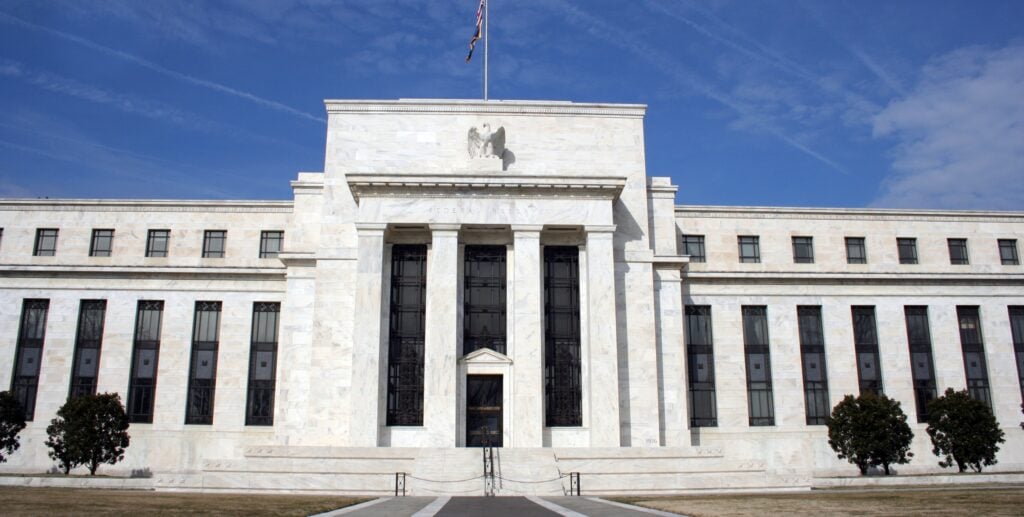[ad_1]
The latest meeting of the Federal Reserve has confirmed expectations that it would hold rates at their current levels. Key interest rates will remain in the range of 5.25% to 5.5% until at least the next Fed meeting in December.
Contents
What’s the Word from the Fed?
When asked about the possibility of further interest rate hikes in the near future at the post-meeting press conference, Federal Reserve Chairman Jerome Powell signaled a readiness to raise rates further while conceding that he wasn’t sure whether the market conditions were tight enough to help achieve the Fed’s goal of bringing down inflation to the rate of 2%.
“We’re not confident that we haven’t, we’re not confident that we have,” Powell said to reporters, referring to reaching the point where market conditions are restricted enough to prevent further inflation spikes. “Inflation has been coming down, but it’s still running well above our 2% target…A few months of good data are only the beginning of what it will take to build confidence.”
Powell also stressed that several external market conditions were continuing to weigh on the economy, which is, in a sense, making any further rate hikes unnecessary. Powell was referring to the recent market-driven uptick in Treasury bond yields and mortgage rates. These rates are affecting the economy in their own ways, and Powell proposed keeping a watchful eye on what the effects will be if these trends persist.
What’s the Word from Everyone Else?
Seema Shah, chief global strategist at Principal Asset Management, believes that Powell’s statement’s ‘’emphasis on financial conditions weighing on the economy is potentially a signal that the Fed has minimal appetite to raise rates further.”
However, Shah perceives a potential danger in this approach:
“[W]ith the economy still so hot and inflation deceleration potentially hitting a road bump, an overly dovish approach from Powell may risk a resurgence in inflation pressures. Powell has a careful balancing act ahead of him—not just today, but for the coming months.”
Other experts have concurred that the Fed will need to keep a watchful eye on its strategy, given the very real possibility of inflation resurgence. Whitney Watson of Goldman Sachs Asset Management told CNBC that a reduction in inflation was likely to progress naturally since ‘’the economy’s resilience has not stalled labor market rebalancing or revived wage and price pressures.’’
Wait and See?
Nevertheless, there still were risks associated with just letting the economy rebalance itself. The Fed could be forced to act again soon enough. Warned Watson: ‘’The rise in inflation expectations, owing to higher gas prices, combined with strong economic activity, preserves the prospect of another rate hike.’’
Powell preempted any potential criticisms of indecisiveness by stressing that the Fed was ready to raise rates again if needed. “The idea that it would be difficult to raise again after stopping for a meeting or two is just not right,” he said. “The Committee will always do what it thinks is appropriate at the time.”
What did come across strongly was Powell’s belief that the patient, wait-and-see approach could prove beneficial, given that economic trajectories can take many months to fully unfold. ‘“I still believe, and my colleagues for the most part still believe… that we will need to see some slower growth and some softening in the labor market to fully restore price stability,” he said. The processes he refers to take much longer than a month or two to really kick into gear.
In other words, the Fed has not excluded the possibility of raising rates further next month, but almost everyone has interpreted Powell’s statements as indicating that more hikes are highly unlikely anytime soon.
In its official statement, issued at 2 p.m. on Nov. 1, the Fed said:
“In determining the extent of additional policy firming that may be appropriate to return inflation to 2% over time, the Committee will take into account the cumulative tightening of monetary policy, the lags with which monetary policy affects economic activity, and inflation.’’
The stock market reacted jubilantly to the Fed’s decisions, with the S&P 500 going up 1% as Powell spoke. The Dow Jones Industrial Average went up 0.7%, and the Nasdaq Composite shot up by 1.3%.
The Bottom Line
The statement essentially reiterates Powell’s point that the Fed simply doesn’t yet know how well its inflation-busting policies are working or how long it will take to see their full effects. It may not act further until it does so, which is most likely to be in 2024.
Ready to succeed in real estate investing? Create a free BiggerPockets account to learn about investment strategies; ask questions and get answers from our community of +2 million members; connect with investor-friendly agents; and so much more.
Note By BiggerPockets: These are opinions written by the author and do not necessarily represent the opinions of BiggerPockets.
[ad_2]

